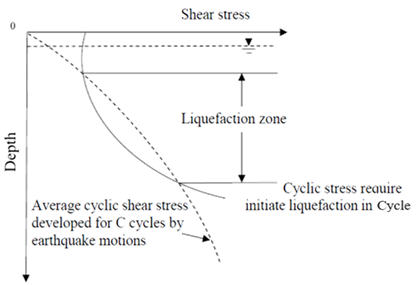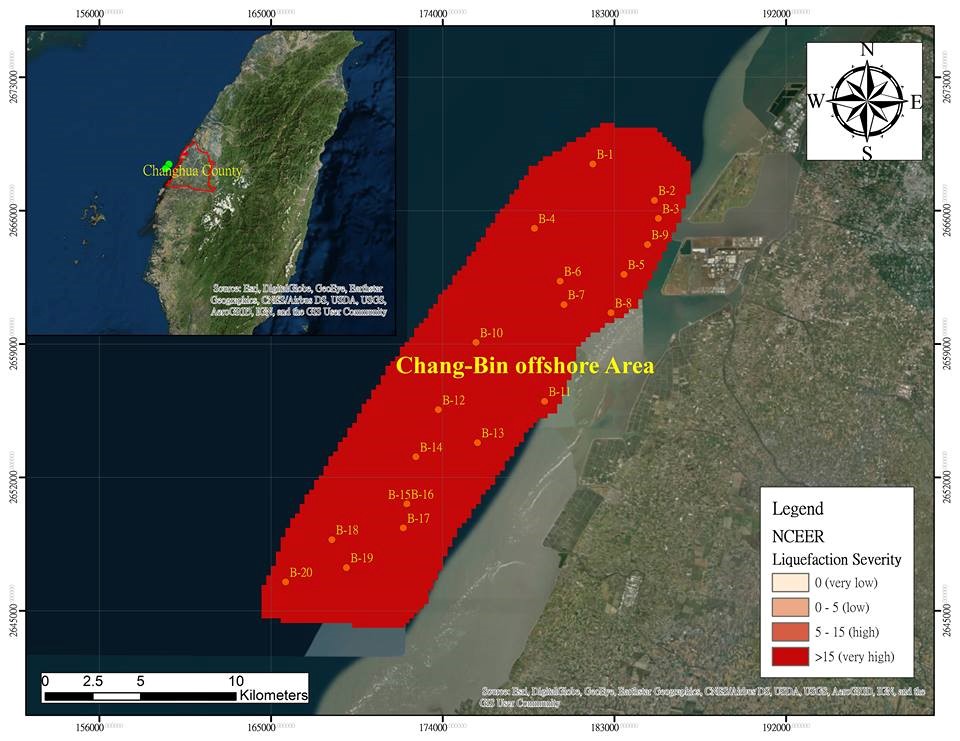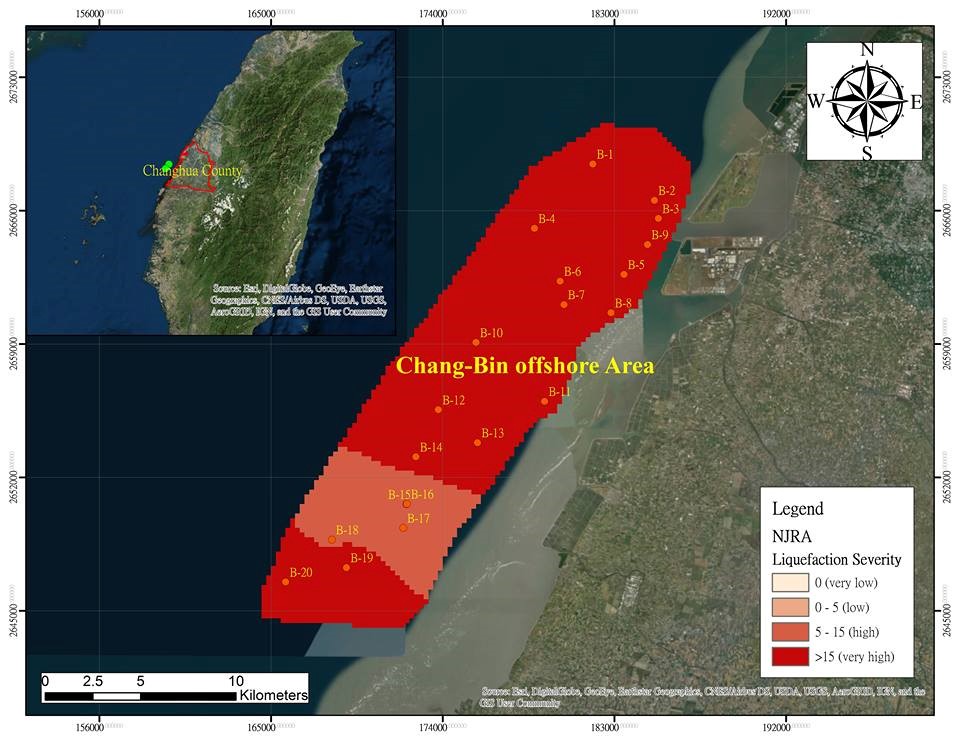


研究內容
Soil Liquefaction Potential of Seabed near Chang-Hua area in Taiwan
Geotechnical hazards can be categorized in several topics including ground shaking, landslide, soil liquefaction, etc.. Soil liquefaction is a phenomenon in which a saturated soil substantially loses strength and stiffness in response to an applied stress, usually earthquake or other sudden change in stress condition, that cause the soil behaves like a liquid cannot be able to support any charge. It also cause damage of infrastructures and loss of life during earthquake. Taiwan government plan to install offshore wind farm with capacity of 4 GW before 2030. However, strong seismic activities and transcendental geological conditions are the issues for offshore wind farm development in Taiwan. The seabed conditions of the Taiwan Strait is also the challenges of Engineers. The loose sandy soil and soft clay formed with alluvial layers from rivers. These loose sandy soil layers show high soil liquefaction potential of Taiwan Strait. In this study, 28 boreholes data of the seabed near Chang-Hua area (Chang-Bin) in Taiwan are used to estimate soil liquefaction potential according to the National Center for Earthquake Engineering Research (NCEER) analysis method and New Japanese Road Association (NJRA) analysis method. Soil liquefaction potential according to Iwasaki method is also presented. The design earthquake used in this research followed the Seismic Design Specification and Commentary of Buildings, release by the Construction and Planning Agency of Taiwan’s Ministry of Interior. NCEER analysis method showed that liquefaction may occur a depth from the ground surface to 4.5 m as well as at a depth from 10.5 to 19.5m for all 20 boreholes. It was also verified that liquefaction is potential for all layer for the six boreholes B-5; B-6; B-7; B-8; B-14; and B-15. NJRA analysis method showed that liquefaction is not potential below a depth of 10.5 m. The distribution map of soil liquefaction potential is presented according Iwasaki method using safety factor from NCEER and NJRA analysis method.
Keywords: Soil liquefaction; offshore wind farm.

Figure1. Simplified empirical method of soil liquefaction evaluation [Kramer 199].

Figure2. Soil liquefaction potential at the seabed near Chang-Hua according Iwasaki using the safety factor from NCEER analysis method.

Figure3. Soil liquefaction potential at the seabed near Chang-Hua according Iwasaki using the safety factor from NJRA analysis method.
畢業論文
| • | 史瑋帆 (2018),「Soil Liquefaction Potential of Seabed near Chang-Hua area in Taiwan」,碩士論文,國立成功大學水利及海洋工程所,台南。 |
|---|